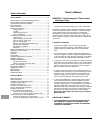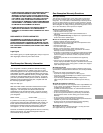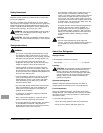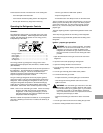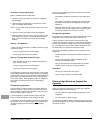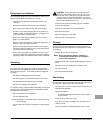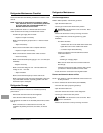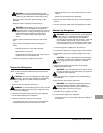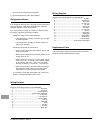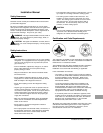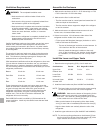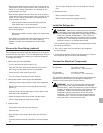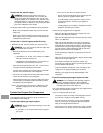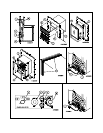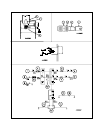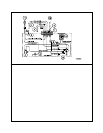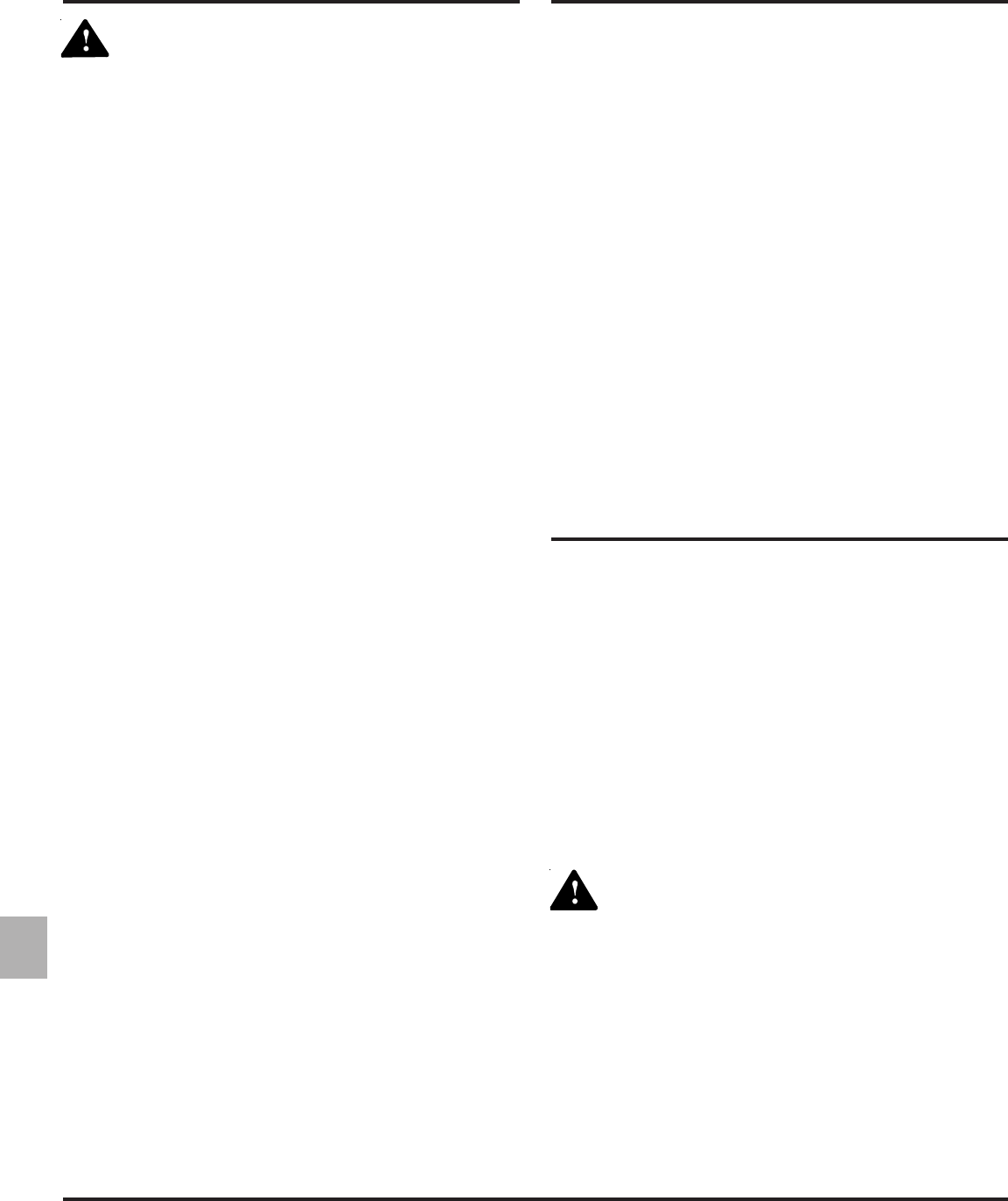
Installation and Owner’s Guide 12
Ventilation Requirements
WARNING: The completed installation must:
- Make sure there is sufficient intake of fresh air for
combustion.
- Make sure the living space is completely isolated from
the combustion system of the refrigerator.
- Make sure there is complete and unrestricted ventilation
of the flue exhaust which, in gas mode, can produce
carbon monoxide. The breathing of carbon monoxide
fumes can cause dizziness, nausea, or in extreme
cases, death.
- Make sure the refrigerator is completely isolated from its
heat generating components by the correct use of
baffles and panel construction.
Certified installation needs one lower intake vent and one upper
exhaust vent. Install the vents through the side wall of the
vehicle exactly as instructed in this manual. Any other installa-
tion method voids both the certification and the factory warranty
of the refrigerator.
The opening for the lower intake vent, which is also the service
access door, must be even with or immediately below the floor
level. This allows any leaking propane gas to escape to the
outside and not to collect at floor level.
CSA International certification allows the refrigerator to have zero
(0) inch minimum clearance at the sides, rear, top, and bottom.
While there are no maximum clearances specified for certifica-
tion, the following maximum clearances are necessary for correct
refrigerator performance:
Bottom 0 inch min. 0 inch max.
Each Side 0 inch min 1/2 inch max.
Top 0 inch min. 1/4 inch max.
Rear 0 inch min. 1 inch max.
These clearances plus the lower and upper vents cause the
natural air draft that is necessary for good refrigeration. Cooler
air goes in through the lower intake vent, goes around the
refrigerator coils where it removes the excess heat from the
refrigerator components, and goes out through the upper
exhaust vent. If this air flow is blocked or decreased, the
refrigerator will not cool correctly.
Each NORCOLD model is certified by CSA International for
correct ventilation. Install only the certified vents that are listed
in this manual.
Assemble the Enclosure
1. Determine the rough opening (R.O.) size for each vent.
Certified Vent Part No. R.O. Height R.O. Width
Upper Side 617485 7 1/4 in. 18 in.
Exhaust Vent
Lower Side 617484 9 3/4 in. 19 3/8 in.
Intake Vent
Universal Upper 620505 6 3/16 in. 17 13/16 in.
& Lower Vent
2. Install the lower intake vent (See Art00947 and Art00948):
NOTE: The lower intake vent is also the service access opening
for the components on the rear of the refrigerator.
WARNING: Make sure the bottom of the opening for the
lower intake vent is even with or immediately below the
floor level. This allows any leaking propane gas to escape
to the outside and not to collect at floor level.
- Make sure the bottom of the openeing of the lower intake
vent [1] is even with or immediately below the floor level [2].
- Align the lower intake vent vertically below the coils of the
refrigerator.
3. Install the upper exhaust vent (See Art00947 and Art00948):
NOTE: For the best cooling performance, the distance [3] from
the floor level [2] to the top of the rough opening [4] of the
upper exhaust vent should be 30 1/2 inches.
1. Make sure the enclosure is 20.63 - 20.76 inches high x 17.50
- 17.63 inches wide x 21.25 inches deep.
2. Make sure the floor is solid and level.
- The floor must be metal or a wood panel and extend the full
width and depth of the enclosure.
- The floor must be able to support the weight of the refrigera-
tor and its contents.
3. Make sure there are no adjacent heat sources such as a
furnace vent, a hot water heater vent, etc.
4. If there is more than 1/2 inch between either side of the
refrigerator and the inside of the enclosure:
- Fill the space with fiberglass (batt-type) insulation or add a
baffle to eliminate the clearance.
- The rear of the batt-type insulation must be between 18
-19 inches from the face of the enclosure.
- Securely attach the batt-type insulation to the enclo-
sure, so that it remains in this position during refrigera-
tor installation, if it becomes wet, and in windy condi-
tions.
Install the Lower and Upper Vents



